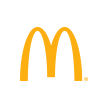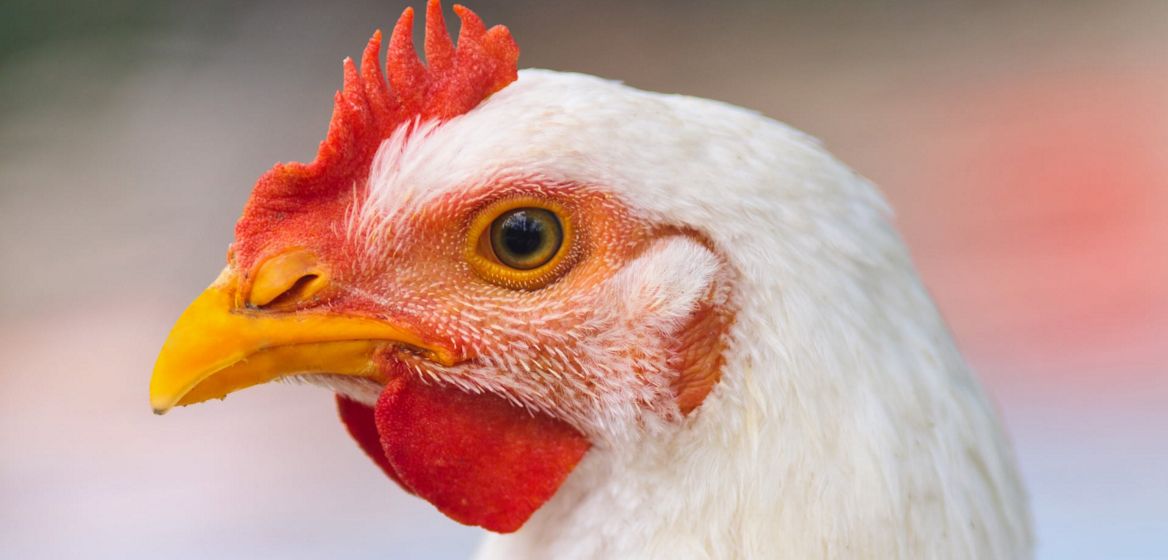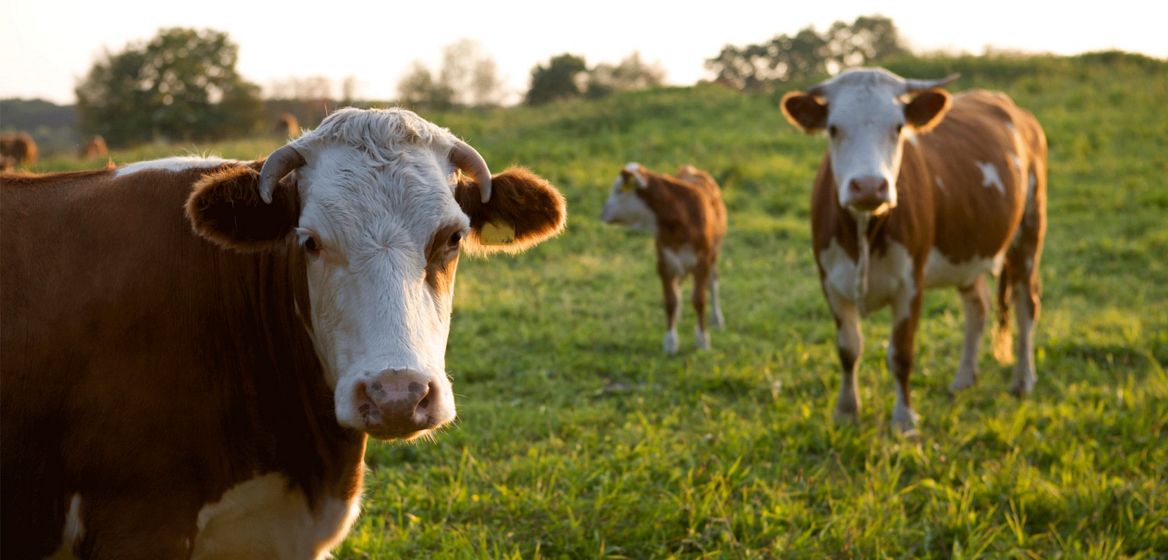Responsible Antibiotic Use
We are working toward the responsible use of antibiotics in our supply chain, including reducing their use and not permitting routine use of medically important antibiotics in food animal production.
Our long-standing commitment to reducing antibiotic use in food animals – including those defined as medically important antibiotics by the World Health Organization (WHO) – stretches back to 2003, when we first outlined our position.
Our Recent Progress
- We have established market-specific targets for the responsible use of antibiotics in our global beef supply chain for 10 in-scope markets (representing more than 80% of our global beef supply chain as of the end of 2022).1
- We are actively partnering with our supply chain in the collection of antibiotic use data associated with global beef industries across our 10 in-scope markets1, leveraging independent third parties to facilitate data aggregation.
- The use of Highest Priority Critically Important Antibiotics (HPCIAs) to human medicine has been eliminated from all chicken served in Australia, Brazil, Canada, Europe, Japan, South Korea and the U.S., with China expected to comply before the end of 2027.
Read our latest Purpose & Impact Report for our most recent goals, performance and actions.
Our Strategy
Through our commitment to responsible antibiotic use, we are collaboratively doing our part to help preserve the effectiveness of antibiotics for future generations. According to the WHO, “over-use and misuse of antibiotics in animals and humans is contributing to the rising threat of antibiotic resistance.”2 Antimicrobial Resistance (AMR) is a critical global public health issue, which we take seriously and believe we and our suppliers have a responsibility to help address.
Our policies do not permit the routine use of medically important antibiotics for the purpose of growth promotion or the habitual use of antibiotics for disease prevention.3
Our focus is on refining antibiotic selection and administration, reducing non-therapeutic antibiotic use and, when possible, replacing antibiotics with long-term solutions to proactively prevent disease and protect animal health and welfare. We remain committed to the treatment of sick animals aligned with herd veterinarian direction to ensure the safety of our supply chain.
Responsible-Use Approach to Treat Sick Animals
McDonald’s will collaboratively do our part to advance practices related to the responsible use of antibiotics, following guidelines set out by the WHO, the World Organization for Animal Health (WOAH, formerly the OIE) and other recognized public and animal health bodies.
We strive to contribute to antibiotic effectiveness for future generations by working across our industry and supply chain with producers, veterinarians, academics and other experts in the field. We intend to use our voice to advocate for increased transparency, data collection and policies to enable better assessment and, where possible, reduction in use across the industry.
We are committed to a responsible-use approach – refining antibiotic selection and administration, reducing non-therapeutic antibiotic use and, when possible, replacing antibiotics with long-term solutions to proactively prevent diseases and protect animal health and welfare, as outlined in our revised 2017 Vision for Antibiotic Stewardship (VAS). We believe reducing any overdependence on antibiotics within our supply chain complements our decades-long commitment to managing and improving the health and welfare of animals.
We engage with academia, suppliers, farmers and ranchers, nongovernmental organizations (NGOs), veterinary networks and others who have a deep understanding of these issues and how to achieve progress. McDonald’s was a founding member of the International Consortium for Antimicrobial Stewardship in Agriculture (ICASA). Through this cross-industry collaboration, we work to identify and advance commercial solutions to address AMR.
Our protein-specific policies are based on the WHO “One Health” approach, which emphasizes the need for collaborative, multi-discipline efforts at the local, national and global levels to attain optimal health for people, animals and the environment.
For more information on our approach to individual protein supply chains, see Advocating for Responsible Antibiotic Use in Beef, Implementing a Global Chicken Antibiotics Policy and Our Pork Antibiotics Use Policy.
Advocating for Responsible Antibiotic Use in Beef
In 2018, we implemented McDonald’s Antibiotic Policy for our Beef Supply Chain (PDF – 463KB). It is informed by our VAS and follows global guidance from expert bodies like the WHO and WOAH. This policy identifies McDonald’s expectations and anticipated implementation plans with respect to antibiotic use in our beef supply chain while complying with local laws and regulations. It focuses on the following beef sourcing countries: Australia, Brazil, Canada, France, Germany, Ireland, New Zealand, Poland, the U.K. and the U.S.
Since implementing our policy, we have updated it to continue building on McDonald’s long-standing commitment to responsible antibiotic use in food animals. As part of this policy evolution, in 2022 we established market-specific responsible-use targets informed by significant research, pilot testing and collaboration with, and input from, subject-matter experts. These efforts focused on our 10 in-scope markets,4 which accounted for over 80% of our global beef supply chain as of the end of 2022. Our targets have been established in alignment with the “One Health” approach and with the 3 Rs (Refine, Reduce and Replace) top of mind. Reduction remains an intended outcome of our responsible use commitment, while allowing for the treatment of sick animals, aligned with herd veterinarian direction.
Our targets focus on the responsible use of medically important antibiotics and are aligned with WHO Guidelines on AMR. Our policy does not permit the routine use of medically important antibiotics for the purpose of growth promotion or the habitual use of antibiotics for disease prevention.5 McDonald’s global position on responsible antibiotic use recognizes that effective treatment of sick animals requires antibiotic selection with oversight from a qualified veterinarian through a valid Veterinary Clinic Patient Relationship (VCPR). These targets reflect general guidance for markets holistically and are not expected/required of each individual producer.
Partnership and collaboration with stakeholders and suppliers will continue to be critical for us to help drive positive outcomes, as there is currently a lack of consistent processes, definitions, regulations or thresholds for responsible use of antibiotics in beef across our 10 in-scope markets.
Our intention is to help drive positive behavioral change and transparency, as well as enable comprehensive assessment of antibiotic use across our supply chain in the future. Currently, there is limited data on antibiotic use in the industry as a whole. In 2023, we worked with supply chain partners to deploy data collection processes and begin building access to use data that will help enable future measurement of antibiotic use and trends over time in our supply chain. Through collaboration, we have identified a number of opportunities, as well as challenges, in continuing to improve data and measurement capabilities in this space.
We are still actively working on our journey of antibiotic use data collection, while accounting for the individual needs of our suppliers and their animals. In addition to looking at total antibiotic use across our 10 in-scope markets, we are also focused on understanding the drivers of antibiotic use, such as disease pressures, weather impacts or other external factors, that cause changes in antibiotic use. With the health and welfare of animals at the forefront of our responsible antibiotic use approach, it is critical for us to take the time to understand these nuances to ensure we implement our standards in a way that promotes responsible use, while continuing to positively impact animal health and welfare.
Additional details on the targets established for specific markets and sectors can be found on page 7 of our Antibiotic Policy for our Beef Supply Chain (PDF - 245 KB).
Advocating for Responsible Antibiotic Use in Chicken
Since February 2019, we’ve tracked the use of medically important antibiotics in the supply chain supporting our top chicken sales markets, representing 80 slaughter facilities and more than 8 billion birds. Producer data collection is managed by our third-party provider, the Food Animal Initiative (FAI). In 2017, we implemented our Chicken Antibiotics Policy, which includes eliminating the use of HPCIAs as well as not permitting the routine use of antibiotics for disease prevention or growth promotion, in our top chicken sales markets around the world.6 All in-scope markets are currently on track to eliminate the use of HPCIAs in our chicken supply by the end of 2027 and antibiotics shall not be used for routine prevention or for growth promotion.
Advocating for Responsible Antibiotic Use in Pork
We are advancing our work on a policy on the responsible use of antibiotics in our pork supply chain. In 2021, we created a global, cross-functional working group to help develop such a policy, anchored to responsible use. This draft policy was introduced to our global suppliers, who were asked to conduct gap assessments between the McDonald’s draft criteria and expectations and their current internal policies on antibiotic use. In 2022, we evaluated supplier feedback and are now leveraging insights to inform updates to our policy, including our implementation timeline.
In 2023, in partnership with our suppliers, we will communicate and deploy our policy to pork industries in the in-scope markets. As part of this process, we will identify and develop market-specific plans for accessing and collecting antibiotic use data across all in-scope markets.
Footnotes
1 Beef antibiotic use: For purposes of this goal, in-scope market refers to the country from which the product is sourced. This goal focuses on Australia, Brazil, Canada, France, Germany, Ireland, New Zealand, Poland, the U.K. and the U.S., which represented our top 10 beef sourcing countries and accounted for over 80% of our global beef supply chain as of the end of 2022.
2 Source: WHO, Stop using antibiotics in healthy animals to prevent the spread of antibiotic resistance.
3 This is applicable to our existing antibiotic use policies for chicken and beef supply chains. Beef: Habitual use of medically important antibiotics for disease prevention is a probable indication of an underlying herd-specific and/or management issue and is not permitted except in the following narrowly defined situations: based upon the determination of a qualified veterinarian familiar with the disease history in the herd, non-routine prevention uses may be permitted if there is a high risk of contraction of a particularly infectious disease. If use is deemed necessary and when effective multiple treatment options exist, McDonald’s encourages adoption of a tiered approach to antibiotic selection – least important to human medicine being the first choice, with Highest Priority Critically Important Antibiotics (HPCIAs) reserved for last resort. Chicken: Antibiotics shall not be used for routine prevention or for growth promotion. In addition, antibiotics shall only be prescribed by a licensed chicken veterinarian that has clinically diagnosed an infectious disease or illness, and such antibiotics must be used strictly in accordance with labeled and veterinary direction for dose, duration, route, frequency, withholding period and withdrawal times.
4 For purposes of this goal, in-scope refers to the country from which the product is sourced. This goal focuses on Australia, Brazil, Canada, France, Germany, Ireland, New Zealand, Poland, the U.K. and the U.S., which represented our top 10 beef sourcing countries and accounted for more than 80% of our global beef supply chain as of the end of 2022.
5 Beef antibiotic use: Habitual use of medically important antibiotics for disease prevention is a probable indication of an underlying herd-specific and/or management issue and is not permitted except in the following narrowly defined situations: based upon the determination of a qualified veterinarian familiar with the disease history in the herd, non-routine prevention uses may be permitted if there is a high risk of contraction of a particular infectious disease. If use is deemed necessary and when effective multiple treatment options exist, McDonald’s encourages adoption of a tiered approach to antibiotic selection – least important to human medicine being the first choice, with HPCIAs reserved for last resort. See the full McDonald’s Antibiotic Policy for our Beef Supply Chain (PDF - 245 KB) for further information.
6 Chicken antibiotic use: For purposes of this goal, in-scope markets refers to the country in which the final product is sold. Markets covered by this goal include Brazil, Canada, Japan, South Korea, the U.S., Australia, China and Europe. For the purposes of this goal, Europe includes Austria, Azerbaijan, Belgium, Bulgaria, Croatia, the Czech Republic, Denmark, Estonia, Finland, France, Georgia, Germany, Greece, Hungary, Ireland, Italy, Latvia, Lithuania, Luxembourg, Malta, Moldova, the Netherlands, Norway, Poland, Portugal, Romania, Serbia, Slovakia, Slovenia, Spain, Switzerland, Sweden, the U.K. and Ukraine. As of December 2023, Belarus, Bosnia & Herzegovina and Kazakhstan have been removed from the scope of this goal based on our exit from those markets.
Latest Stories





